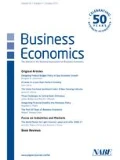Abstract
Oil price shocks have had significant effects on the U.S. economy, keeping energy supply, energy policy, and energy security always in focus. The U.S. energy industry has become more efficient and productive, with increased output despite a smaller energy sector. Since the oil price shocks of the 70s, both the impact of oil price shocks and the way we think about them have changed. The impact of an oil price shock on GDP and core inflation is much smaller in magnitude than in the past and depends on the source of the price shock. The recent shale boom in the U.S. has significantly increased oil production to a record high. The short-cycle supply response of shale producers to price changes have trimmed the peaks and troughs of oil prices in the medium term. The shale boom has lowered our dependence on foreign oil and made us less vulnerable to a classic oil supply shock, but we need to contemplate the vulnerabilities that arise from the externalities of our energy use, which will become more critical as we go forward.

Source: BP statistical review

Source: Bureau of Labor Statistics, EIA

Similar content being viewed by others
Notes
Recession defined here as a year over year decline in employment.
References
Balke, N.S., S.P. Brown, and M.K. Yücel. 2002. Oil Price Shocks and the U.S. Economy: Where Does the Asymmetry Originate? Energy Journal 23 (3): 27–52.
Baumeister, Christiane, and James D. Hamilton. Forthcoming. Inference in Structural Vector Autoregressions When the Identifying Assumptions are Not Fully Believed: Re-evaluating the Role of Monetary Policy in Economic Fluctuations. Journal of Monetary Economics.
Baumeister, Christiane, and James D. Hamilton. 2015. Sign Restrictions, Structural Vector Autoregressions, and Useful Prior Information. Econometrica 83 (5): 1963–1999.
Bernanke, B.S. 1983. Irreversibility, Uncertainty, and Cyclical Investment. The Quarterly Journal of Economics 98 (1): 85–106.
Bernanke, B.S., M. Gertler, and M. Watson. 1997. Systematic Monetary Policy and the Effects of Oil Price Shocks. Brookings Papers on Economic Activity 1: 91–142.
Bjornland, Hilde, Frode M. Nordvik, and Maximilian Rohrer. 2017. Supply Flexibility in the Shale Patch: Evidence from North Dakota. Norges Bank Working Paper 9/2017.
Blanchard, O.J., and J. Gali. 2007. The Macroeconomic Effects of Oil Shocks: Why are the 2000s so Different from the 1970s? National Bureau of Economic Research, Working Paper 13368.
Blinder, Alan, and Jeremy Rudd. 2013. The Supply Shock Explanation of the Great Stagflation Revisited. In The Great Inflation, ed. M. Bordo and A. Orphanides. Chicago: University of Chicago Press for NBER.
Bohi, D.R. 1989. Energy Price Shocks and Macroeconomic Performance. Washington, DC: Resources for the Future.
Brown, Stephen P.A. 2017. New Estimates of the Security Costs of U.S. Oil Consumption. Energy Policy 113: 171–192.
Çakir Melek, Nida, Michael Plante, and Mine Yücel. 2017. The U.S. Shale Oil Boom, the Oil Export Ban, and the Economy: A General Equilibrium Analysis. Federal Reserve Bank of Dallas Working Paper 1708.
Davis, S.J., and J. Haltiwanger. 2001. Sectoral Job Creation and Destruction Responses to Oil Price Changes. Journal of Monetary Economics 48 (3): 465–512.
Edelstein, P., and L. Kilian. 2009. How Sensitive are Consumer Expenditures to Retail Energy Prices? Journal of Monetary Economics 56 (6): 766–779.
Evans, Charles, and Jonas D. M. Fisher. 2011. What Are the Implications of Rising Commodity Prices for Inflation and Monetary Policy? Chicago Fed Letter No. 286.
Ferderer, J.P. 1996. Oil Price Volatility and the Macroeconomy. Journal of Macroeconomics 18 (1): 1–26.
Hamilton, J.D. 1988. A Neoclassical Model of Unemployment and the Business Cycle. Journal of Political Economy 96: 593–617.
Hamilton, James D., and Ana Maria Herrera. 2004. Comment: Oil Shocks and Aggregate Macroeconomic Behavior: The Role of Monetary Policy. Journal of Money, Credit and Banking 36 (2): 265–286.
Hamilton, J.D. 2009. Causes and Consequences of the Oil Shock of 2007-2008. Brookings Papers on Economic Activity 2009 (1): 215–283.
Hamilton, J.D. 2011. Nonlinearities and the Macroeconomic Effects of Oil Prices. Macroeconomic Dynamics 15 (Supplement 3): 364–378.
Higgins, Matthew, Thomas Klitgaard, and Robert Lerman. 2006. Recycling Petrodollars. Federal Reserve Bank of New York Current Issues in Economics and Finance 12(9).
Hooker, M.A. 1996. What happened to the oil price-macroeconomy relationship? Journal of Monetary Economics 38 (2): 195–213.
Huntington, Hillard G. 1998. Crude Oil Prices and U.S. Economic Performance: Where Does the Asymmetry Reside? The Energy Journal 19 (4): 107–132.
Jones, Donald W., Paul N. Leiby, and Inja K. Paik. 2004. Oil Price Shocks and the Macroeconomy: What Has Been Learned since 1996. Energy Journal 25 (2): 1–32.
Kilian, L. 2009. Not All Oil Price Shocks Are Alike: Disentangling Demand and Supply Shocks in the Crude Oil Market. American Economic Review 99 (3): 1053–1069.
Kilian, L., and R. Vigfusson. 2011. Nonlinearities in the Oil Price-Output Relationship. Macroeconomic Dynamics 15 (Supplement 3): 337–363.
Oladosu, G.A., P.N. Leiby, D.C. Bowman, R. Uría-Martínez, and M.M. Johnson. 2018. Impacts of Oil Price Shocks on the U.S. Economy: A Meta-analysis of the Oil Price Elasticity of GDP for Net Oil-Importing Economies. Energy Policy 115: 523–544.
Peterson, John. 2006. The Economic Effects of Recent Increases in Energy Prices. Congressional Budget Office.
Author information
Authors and Affiliations
Corresponding author
Additional information
Presidential Address delivered at the NABE Annual Meeting on October 1, 2018. The views expressed in this article are those of the author and do not necessarily reflect those of the Federal Reserve Bank of Dallas or the Federal Reserve System.
Rights and permissions
About this article
Cite this article
Yücel, M. Oil and the economy: evolution not revolution. Bus Econ 53, 225–231 (2018). https://doi.org/10.1057/s11369-018-0098-9
Published:
Issue Date:
DOI: https://doi.org/10.1057/s11369-018-0098-9




